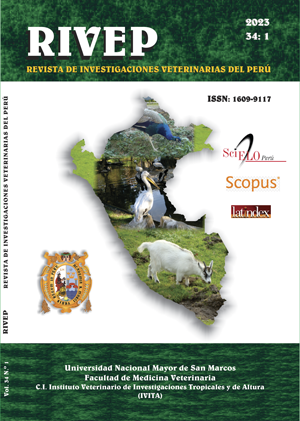Weight components in pirapitinga (Piaractus brachypomus) (Cuvier, 1818) (Teleostei: Characidae) in the floodplain of Arauca, Colombia
DOI:
https://doi.org/10.15381/rivep.v34i1.15367Keywords:
allometry, ichthyofauna, isometryAbstract
The aim of this study was to estimate the allometric parameters of different parts of pirapitinga (Piaractus brachypomus), as well as to establish if the growth of these components is allometric or isometric. In total, 60 specimens collected at random from a farm in Arauca (Colombia) were used. Live weights, carcass weights and weights of scales, viscera and gills were determined. Three algorithms were tested to quantify the relationships between live body weight and each of the components: Ordinary Least Squares, Reduced Major Axis, and Major Axis. The data were logarithmically transformed in order to fit the equations to the allometric function y=10bxa, where y represents the body component in question and x is the independent associated variable. The three methods provided regression coefficients that are, from a theoretical point of view, different, thus providing different estimates of the same quantity. The Ordinary Least Squares algorithm, with the minimum slope, would appear to be the model that best fits the real allometric behavior of this species.
Downloads
Downloads
Published
Issue
Section
License
Copyright (c) 2023 Pere M. Parés-Casanova, Arcesio Salamanca-Carreño, Jennet Bentez Molano, René A. Crosby Granados

This work is licensed under a Creative Commons Attribution-NonCommercial-ShareAlike 4.0 International License.
AUTHORS RETAIN THEIR RIGHTS:
a. Authors retain their trade mark rights and patent, and also on any process or procedure described in the article.
b. Authors retain their right to share, copy, distribute, perform and publicly communicate their article (eg, to place their article in an institutional repository or publish it in a book), with an acknowledgment of its initial publication in the Revista de Investigaciones Veterinarias del Perú (RIVEP).
c. Authors retain theirs right to make a subsequent publication of their work, to use the article or any part thereof (eg a compilation of his papers, lecture notes, thesis, or a book), always indicating the source of publication (the originator of the work, journal, volume, number and date).



